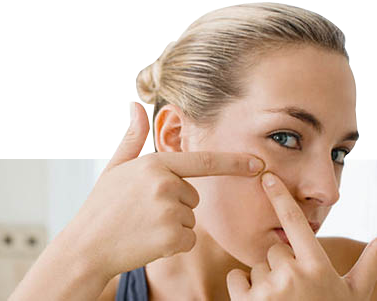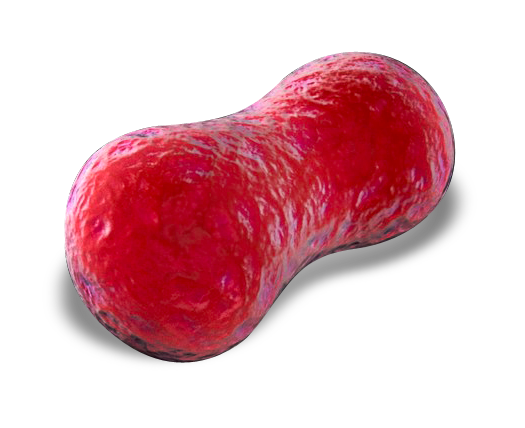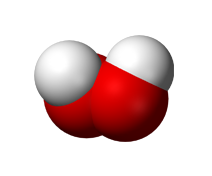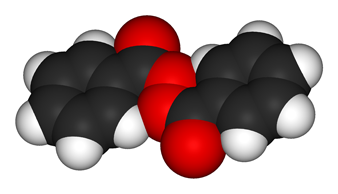Popular Articles
- 35 Herbal Treatments for Acne
- Epsom Salt for Acne and Pimples
- 10 Vitamins for Acne
- When Does Acne Stop for Men, Women, & Teens?
- Tea and Acne - 4 Teas that Help
- 6 Supplements for Acne
- Acne Nodules - Get Rid of Them
- Natural Alternatives for Accutane
- Actimine Supplement Facts
- Vitamin C and Acne - Effective?
- More Articles ...
 Peroxide for AcneHydrogen peroxide and Benzoyl peroxide are the two peroxides used in acne treatment.
Also during acne breakouts, a film of debris and oily secretion covers the skin. This not only prevents optimal aeration of the skin but also leads to the formation of acne lesions such as comedones (whiteheads and blackheads), pimples, papules, and seborrhea (red, scaly skin). There are 2 major causes of these skin changes. Acne can be caused by increased production of male sex hormones or the colonization of the skin by certain bacteria. During puberty, the production of androgens is increased. The major androgen hormones are testosterone and its metabolites such as dihydrotestosterone (DHT). These hormones interfere with sebaceous follicles causing increased production of sebum and dead skin cells.
There are different methods of treating acne. Most topical acne products address the bacterial cause of acne. These products are usually antiseptic or antibacterial. The hormonal imbalance cause is more difficult to address since it is usually a response to the physiological changes in human development. Hormones can also play an important role in the development of acne, especially in women. Because of this, acne breakouts are most frequent in adult females during menstrual cycles, pregnancies, menopause, and the period when they are on non-estrogen birth control pills. Two PeroxidesPeroxides are compounds with one oxygen-oxygen single bond. They are strong oxidizers and often quickly converted by living tissues into oxygen and another harmless compound. There are two peroxides commonly used in the treatment of acne. These are hydrogen peroxide and benzoyl peroxide. Both of these peroxides have the same mechanisms of action in acne treatment. They also have similar side effects and have comparable efficacies in relieving both the inflammatory and non-inflammatory symptoms of acne. Hydrogen Peroxide
Hydrogen peroxide is a very strong oxidizer and it is used as a bleaching agent as well as an industrial-strength cleaner. Living systems break hydrogen peroxide down into oxygen and water. In humans, hydrogen peroxide is a signaling molecule for several biological processes including the marshaling of white blood cells in the healing of tissues. This peroxide is recognized as an antimicrobial agent. It is used for preventing cross-contamination in hospitals. When it is turned into vapor, hydrogen peroxide can be used to sterilize clinical equipment since it kills spores. While hydrogen peroxide is believed to help heal open wounds, this is actually not true. When applied to open wounds, hydrogen peroxide destroys cells. This can cause improper healing which leads to the formation of scars. However, on the skin surface, hydrogen peroxide is an antiseptic agent capable of killing off bacteria. It also serves as an exfoliant and can increase skin turnover. In acne treatment, only diluted solutions of hydrogen peroxide should be used. 3% hydrogen peroxide is the highest strength of the bleaching solution that should be applied to the skin. Higher concentrations can cause a temporary whitening of the skin which is caused by the formation of embolisms in the capillaries when hydrogen peroxide is excessively absorbed through the skin. Benzoyl Peroxide
Like hydrogen peroxide, benzoyl peroxide is also an antiseptic and oxidizing agent. Of the two peroxides, benzoyl peroxide is the one included in most acne products containing peroxides as the active ingredient. It is available in the following strengths: 2.5%, 5%, and 10%. Acne and the PeroxidesBoth hydrogen peroxide and benzoyl peroxide are weak acids. They also share most of their biochemical properties including their oxidative and antiseptic actions. The peroxides are effective against P. acnes for many reasons. First, they are highly reactive oxidative species. Therefore, they can act fast and break down microbial cell walls quickly. Secondly, when peroxides break down on contact with the skin, they release oxygen. Since P. acnes is an anaerobic bacteria, it cannot survive in the presence of oxygen. The peroxides also act as peeling agents by removing the film of dirt covering the skin which is made up of excess sebum, dead skin cells, and bacteria. This chemical exfoliation can help bring out the softer and lusher top layer of the skin, and also help fade acne scars. Furthermore, the peroxides can help unclog skin pores by constricting them. Also, they can reduce acne lesions such as whiteheads and blackheads by drying them up. While benzoyl peroxide is usually included in acne products either as the only active ingredient or in combination with other active agents, hydrogen peroxide is not usually used in acne products. Instead, you can buy a bottle of hydrogen peroxide from your local drugstore. However, you must sufficiently dilute it before applying the solution to your skin. Acne products containing benzoyl peroxide can also include salicylic acid, adapalene, sulfur, or a topical antibiotic. Since both peroxides are bleaching agents, care should be taken to avoid contact with the hair or clothing when applying them. Both peroxides can cause dry skin and irritation especially for those with dry, sensitive skin types. A few users also report experiencing burning and itching sensations. These side effects can be reduced by further diluting the peroxide (for hydrogen peroxide), by using a medication containing the least strength of the peroxide (2.5% for benzoyl peroxide), and by following their application with moisturizers. To apply hydrogen peroxide on the acne-affected area of your skin, you should first wash the skin with a mild soap. If you bought a hydrogen peroxide solution stronger than 3%, then you should take a little of it and dilute it to below 3% with water. Dip a cotton ball in the peroxide solution and swab the affected area. Let the peroxide stay for a couple of minutes, and then when it no longer bubbles, remove it by rinsing your skin with water. You can apply an oil-free moisturizer thereafter to prevent dryness. |
| Next Article: Aloe for Acne Treatment |





 Acne is caused by the clogging of the skin pores by plugs made of dead skin cells,
Acne is caused by the clogging of the skin pores by plugs made of dead skin cells,  On the other hand, acne-causing bacteria such as
On the other hand, acne-causing bacteria such as  Hydrogen peroxide is the simplest peroxide. It is sold as a clear, slightly viscous liquid.
Hydrogen peroxide is the simplest peroxide. It is sold as a clear, slightly viscous liquid. Benzoyl peroxide is an organic acid. It breaks down into benzoic acid and oxygen. It is also a bleaching agent and used in teeth whitening and hair bleaching.
Benzoyl peroxide is an organic acid. It breaks down into benzoic acid and oxygen. It is also a bleaching agent and used in teeth whitening and hair bleaching.